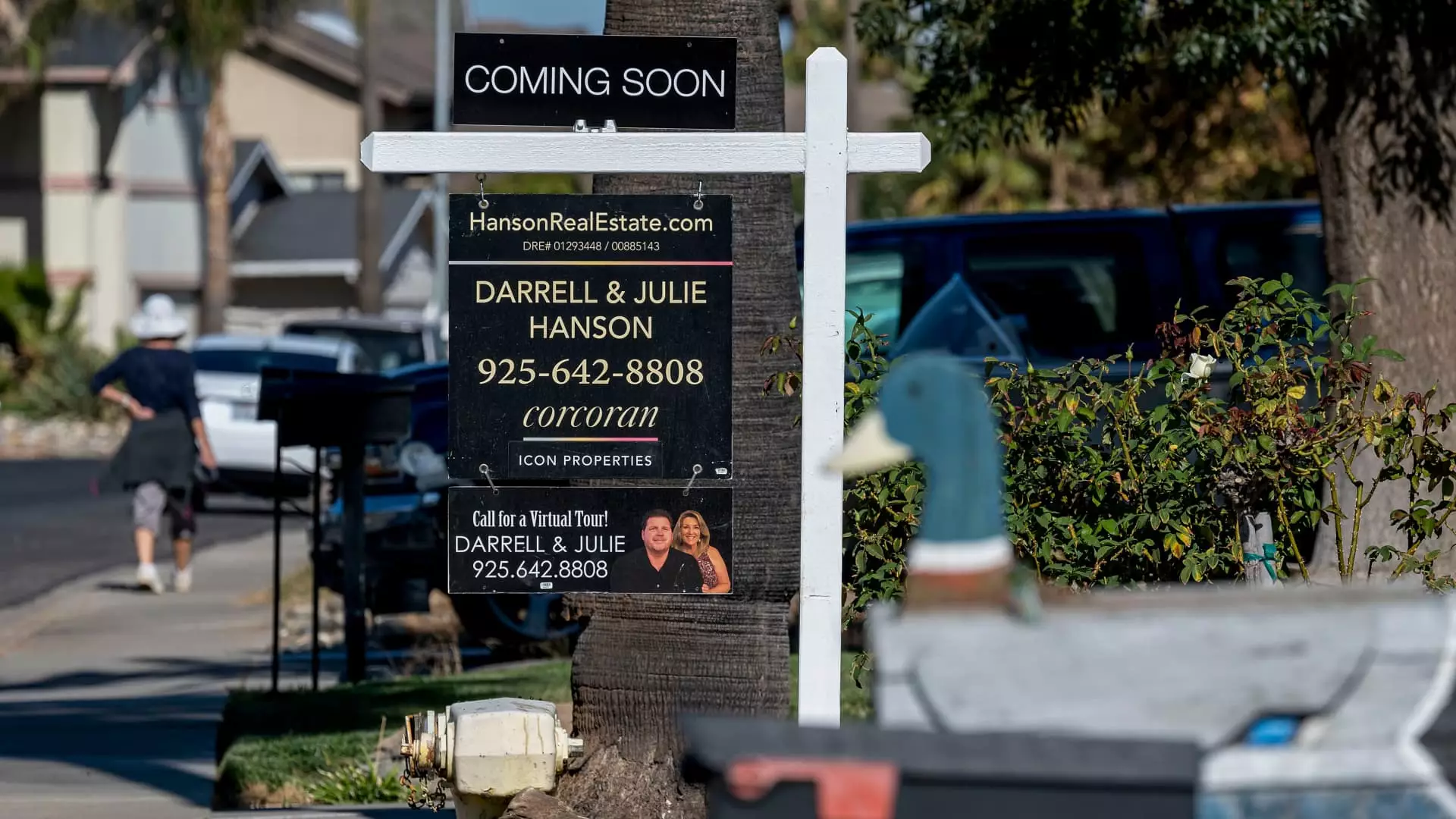In recent weeks, mortgage rates have shown an upward trend, reflecting shifting investor sentiment regarding the economic landscape influenced by political developments, notably under the Trump administration. Last week, the mortgage market exhibited a momentary period of stability, with total application volume seeing a minor increase of 0.5% compared to the previous week, as reported by the Mortgage Bankers Association’s (MBA) adjusted index. While this increment may appear negligible, it indeed marks a turning point, heralding the first uptick in demand in a duration of seven weeks.
The average contract interest rate for 30-year fixed-rate mortgages has climbed to 6.86%, up from the previous rate of 6.81%. This escalation accompanied a slight decrease in points, which dropped from 0.68 to 0.60, encompassing origination fees for loans with a 20% down payment. Joel Kan, the deputy chief economist for the MBA, elaborated on the situation, attributing the rising mortgage rates to increased Treasury yields as the markets reflect on the possible repercussions of Trump’s presidency. This ongoing evolution in rates comes in the wake of the Federal Reserve’s anticipated 25-basis-point rate cut, which failed to significantly sway market dynamics.
Refinancing applications, which are particularly vulnerable to shifts in interest rates, saw a drop of 2% during the week, reaching their lowest point since May. Nevertheless, this figure does remain 43% higher compared to the same period last year, when rates were approximately 75 basis points higher. Conversely, applications for purchasing mortgages recorded a slight increase of 2% weekly and a marginal rise of 1% year-on-year. While prospective homebuyers might be enjoying lower rates than last year, they are simultaneously confronted with soaring home prices and a dwindling supply of available homes.
Interestingly, the demand for loans backed by the Federal Housing Administration (FHA) and the U.S. Department of Veterans Affairs (VA) saw noticeable enhancements, with applications increasing by 3% and 9% respectively. Kan highlighted that FHA mortgage rates diverged from the prevailing trend by decreasing over the week, presumably benefiting a segment of borrowers and contributing to the overall uptick in conventional purchase applications.
As the mortgage rates continued to climb following the closure of the bond market for the Veterans Day holiday, analysts are keenly observing how electoral volatility influences market stability. Matthew Graham, COO at Mortgage News Daily, suggested that the prevailing market conditions reflect a complex mixture of expectations regarding future fiscal policy changes. As stakeholders navigate these tumultuous waters, the trends in mortgage applications will closely mirror broader economic sentiments, thereby shaping the trajectories of homebuyers and investors alike.
While minor fluctuations in interest rates and applications may seem mundane, they encapsulate a broader narrative reflecting sentiments about the economy’s future under a shifting political backdrop—one that requires careful observation and analysis moving forward.

